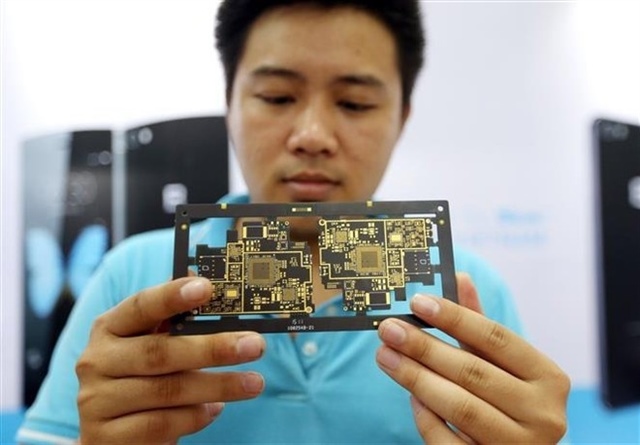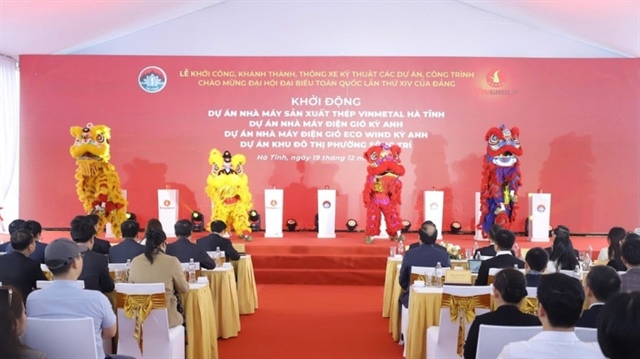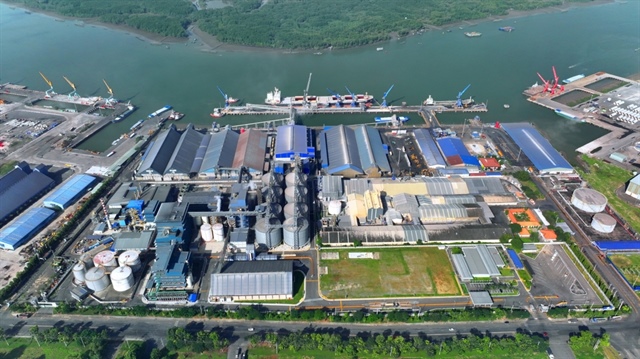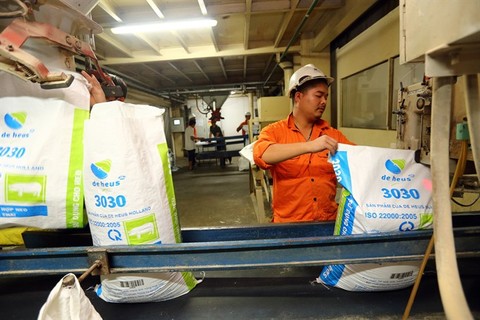Rethinking business for a future in Industry 4.0
Rethinking business for a future in Industry 4.0
Vietnam is both qualified and motivated to take the lead in the Fourth Industrial Revolution. Vu Minh Khuong, associate professor at the Lee Kuan Yew School of Public Policy (National University of Singapore) and member of the economic advisory group to the Vietnamese prime minister, speaks to VIR about what the future will bring.
The Fourth Industrial Revolution (Industry 4.0) has quickly become the latest buzzword in Vietnam. However, is Industry 4.0 bringing in real opportunities for the Vietnamese economy or is it just a fashionable concept?
Industry 4.0 first appeared in a German high-tech strategy project for 2020 aimed at bolstering the computerisation of manufacturing. The importance and extension of Industry 4.0 was confirmed when the 2016 World Economic Forum held in Davos-Klosters (Switzerland) raised a discussion on the theme of “Mastering the Fourth Industrial Revolution”. Essentially, Industry 4.0 is the process of transforming the real, physical world into a digital one. This process is taking place globally, coupled with cutting-edge technology platforms, including the Internet of Things (IoT), virtual reality, virtual reality interaction, artificial intelligence, social networking, cloud computing, and big data. Such technologies act on great performance and give a competitive edge to businesses, organisations, and governments.
As such, Industry 4.0 has become a topical, hot story. But it will only be reduced to a fashionable concept if insiders miss the opportunities emerging and lag behind the trend’s movement. And Vietnam is no exception.
Opportunities emerging from Industry 4.0 are looming. So what position can Vietnam hold in the Industry 4.0 playing field?
In my view, Vietnam has three major advantages.
Firstly, Vietnam already has a good sense of Industry 4.0, which is spreading fast and extensively across the country. Aside from this, the robust development of Vietnam’s cheap, good-quality IT infrastructure and services does favours to the spread of Industry 4.0.
Secondly, the number of IT users in Vietnam is very high. They are already familiar with the great benefits of various IT applications, particularly those improving the quality of life and business operations. It can be said that the development level of Vietnam’s leading enterprises is not lower than the world average.
Thirdly, Vietnam’s integration into the international market has been getting stronger of late, in terms of both trade and investment. Thus, Vietnam’s economic openness and innovative spirit are expected to draw local entities closer to Industry 4.0.
However, Vietnam is facing limitations in terms of infrastructure and human resources to make digital technology a strategic tool for further development. Additionally, the efficiency of group work and teamwork remains a problem.
Traditional resources such as land, capital, and labour are restricted. How could Industry 4.0 combat these limitations?
Changes to the use of resources should be considered with some of the following points in mind.
Firstly, traditional resources such as land, capital, and labour need to be prioritised for the creation of renewable, shared, and combined products. For example, land could be used for solar farms rather than shrimp hatching. Vehicle and house development projects should be
encouraged in accordance with the shared product format, like the unique Airbnb accommodation booking system.
Support should be raised to accelerate collaboration and linkages for combined products.
Secondly, big data has emerged as an increasingly important resource. This resource has unique attributes. In fact, data resources are never depleted but instead increase exponentially. For instance, the more people use big data, the more valuable and efficient it becomes. Therefore, Vietnam needs to build on a digital resource ecosystem.
Thirdly, the government plays a very important role in shaping policy on gathering and exploiting digital resources. The government ought to be one of the largest and most valued sources of data and should take the lead in extracting the values of digital resources, particularly useful for the strategic planning and realisation of policies.
How does Singapore approach and deploy Industry 4.0? What could Vietnam learn from it?
Singapore puts a focus on supporting small- and medium-d enterprises (SMEs). SMEs were selected as the strategic policy focus, aimed at promoting the acquisition of Industry 4.0.
Firstly, without an appropriate support policy, SMEs – who hold a large proportion of the total labour force and make essential contributions to the Singaporean economy – could be left behind. They could also lose their competitive edge and even face stagnation in productivity growth. On the other hand, a good incentive policy can promote their agility and flexibility, enabling them to grow into a leading force, bolstering the whole effort of the economy’s digital transformation.
Secondly, Singapore facilitates and encourages SMEs to approach Industry 4.0. They are assisted by the government in determining and clarifying the stages of digital transformation, in confronting issues that arise, and in making beneficial Industry 4.0 investments.
In addition, there must be an agency established to be in charge of supervising the process. The government must also allocate a sufficient budget to support SMEs approaching Industry 4.0 technologies. Focus should be placed on sectors which obtain obvious benefits from digital applications, including tourism, trade, logistics, and security.
Vietnam, in my point of view, should pay particular attention to supporting SMEs’ access to Industry 4.0 and take the lead in the trend. The country could consider the application of the SMART model:
-S - Strategy: This stage urges the consideration of SMEs as a strategic sector as well as the need to set forth powerful policies for them. Importance is attached to the mobilisation of enterprises with high readiness and spreading the spillover effects to keep abreast of, and even take the lead in, the trend.
-M - Monitoring: There is a set of indicators to periodically monitor and assess results and draw practical lessons.
-A - Accountability: This highlights the accountability of stakeholders. An agency and its staff must take responsibility for both the success and failure of a programme designed to support SMEs in Industry 4.0.
-R- Rethinking: This encourages us to change the way we think, alter our conceptions of what reality is, listen to businesses and professionals, and utilise international experience.
-T - Trust: There must be a deeper trust of businesses in the benefits of technological applications and the government’s support for the business community.
Vietnam has many advantages to implement the above model, including a large number of SMEs and young entrepreneurs with good knowledge of technology and a desire to explore new trends. Remarkably, the Vietnamese government emphasises the significance of accelerating SMEs’ development and the promotion of startups, creativity, and Industry 4.0.
What should Vietnamese enterprises do to grasp opportunities emerging from Industry 4.0?
To achieve a higher development level, Vietnamese enterprises must change themselves, change their own minds first.
Let’s think of the opportunities Industry 4.0 could bring in. Local firms need to gain the initiative in preparing platforms and strategic tools instead of worrying about challenges.
What are your expectations for the upcoming developments of Industry 4.0 in Vietnam?
In the 21st century, a poor country can reap robust growth and create a miracle development story thanks to two drivers – international integration and Industry 4.0. Vietnam seems to hold a very favourable position with which to exploit and promote these two dynamic drivers. With locals’ great aspirations for development, Vietnam will surely take the lead in the trend with creativity and breakthroughs in both its international integration and approach to Industry 4.0 in the decades to come.






















